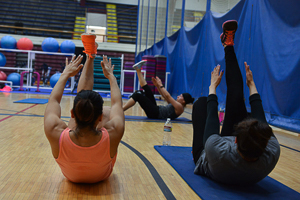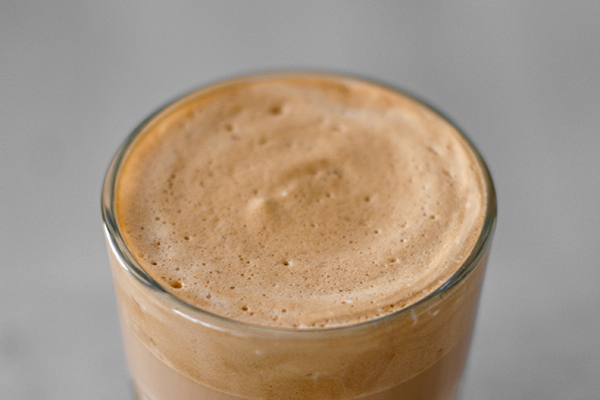Preventing injuries during military training

PacMed doctor explains common injuries and preventive measures for military training.
Tired of getting hurt during military training? One local sports medicine doc has some tips.
Dr. Stephen Gingrich, a sports medicine physician graduated from medical school back in 2010, and has been with PacMed since August of 2015. With a background in personal training, he has witnessed and treated many sports-related injuries, enabling him to identify the most common ailments associated with military training regimens and routines.
Do you have any personal affiliation with the U.S. military?
I do not, although I do currently see a lot of patients who either are or have been in the military.
What would you say are the most common military training injuries?
For the military, the most common injuries are over-use injuries – particularly in the lower limbs. Medial Tibial Stress Syndrome and shin-splints are two of the most frequent injuries I see. These are fairly severe issues because they can mean that any weight-bearing can become very painful. Stress fractures are also somewhat common, and although most people do not get to that point, it certainly does happen. People can also develop what’s called Stress Reaction, which is usually something that people who are training come in for seeking medical advice.
When are these injuries most likely to occur?
One of the times in which many military recruits encounter these injuries is during basic combat training. You see a lot of these injuries develop once a person starts to run or do a lot of weight training without a gradual build-up.
How do unsafe practices make these injuries occur?
Unlike many athletes who start their training earlier in life, many people who join the military don’t have that background, so they’re essentially starting from scratch. When this happens, a lot of over-use injuries are likely to happen. There are definitely things specific to the military with higher risk for these kinds of injuries; parachuting, for example, can cause lower-limb impact injuries.
How can these injuries be prevented – what steps or practices can be utilized to ensure safety for everyone?
The main preventative measure would be to prepare before the conditioning program so that the soldier is not starting without any proper exercise training. U.S. militaries have started implementing programs that have a screening process for recruits that may be at higher risk for developing these injuries and putting them into a program where they slowly build stamina to a certain point and then begin the rest of the training process. The other thing to note is whether or not a recruit or active-duty member has a preexisting injury, because there is a very high risk that the injury will recur if it has not been rehabilitated correctly.
Good news for military members and their families: these injuries can be prevented with the proper preparation and safeguards. If you have further questions, consult your primary care doctor or consult one of the sports medicine specialists on our team at PacMed.
Spring Break safety

During Spring Break, Seattleites will take to the skies and the highways with the hopes of escaping the daily work or school routine with a spring break getaway. Whether your idea of spring break is a relaxing holiday on the beach, a road trip with the family, or a week with your closest friends, spring break poses its own set of health concerns. Spring break stressors – which can include heatstroke, safety concerns and more – can all be minimized by planning ahead and taking a few simple precautions. Here are some tips to make this year’s spring vacation fun, safe and healthy for yourself, your friends and your family.
Pack a medical kit. Rather than trying to find a pharmacy, especially if battling a language barrier, make a point to pack a small medical kit for urgent needs. Tylenol for pain and fever; antihistamines such as Benadryl for allergies; Neosporin for cuts and plenty of BandAids are good to have on hand. If traveling out of the county, it would be wise to carry antibiotics in case of “traveler’s tummy.”
Ensure you are up-to-date with vaccines. Influenza vaccine is recommended as this can be found in some countries even during summer months. Tetanus vaccine should be updated every 10 years for any cuts or wounds that get dirty. For travel outside of the U.S. certain vaccines like Hepatitis A and Typhoid vaccines may be recommended. Consulting the Center for Disease Control website (www.cdc.gov/travel) is a good starting point.
Hydrate Often. One of the more common ailments when traveling is dehydration especially with destinations that have hotter climates. Strive to drink water frequently throughout the day to prevent illness.
Be careful of what you eat and drink. Depending on your location, food can be prepared quite differently and cleanliness of water can be questionable. For food, know what you’re eating and how it’s prepared to prevent food borne illness. Additionally, ensure that you have medication with you for an upset stomach. For water, if you’re unsure if it’s safe to drink, buy bottled water and avoid ice cubes that might be frozen from a contaminated water source. Also, fruits and vegetables may have been washed in contaminated water resulting in gastrointestinal illness. As a tip, boiling water at a rolling boil for at least 5 minutes can kill most pathogens.
Protect yourself against the sun. Make sure to bring plenty of sunscreen that is at least 30 SPF for the whole family. The sun’s UV rays are the strongest between 10a.m. and 4p.m., and can bounce back from sand, snow or concrete. Cover all of the exposed skin often with copious amounts of sunscreen. Use before and after watersports and exercise, just remember it takes 30 minutes to be effective. Sunscreen is generally not recommended for infants under 6 months of age – use long sleeves and hat to keep a baby’s skin protected from the sun.
Get traveler’s insurance. If leaving the country, it is advisable to have traveler’s insurance. Emergency evacuations and international medical care are likely not covered by your health insurance carrier.
Stay alert! The biggest reason for injuries and deaths in the U.S. and abroad when traveling is car accidents. Make sure to take frequent breaks and rest stops on long car rides. Traffic patterns in foreign countries may be more chaotic. As a pedestrian, use extra caution in these situations. Additionally, while there’s nothing wrong with indulging a little on vacation, be careful about how much, and where you drink alcohol as it can make you vulnerable to unsolicited danger.
Most importantly – have fun! Spring break should be a time to relax and unwind from the day-to-day stress of school, home life and work. But in many cases, it’s not always that simple. Make sure to follow these tips to ensure that your vacation is memorable for all the right reasons.
Recipe: Peanut Butter Protein Smoothie
For a simple, protein-packed meal, try this peanut butter smoothie!
Healthy Habits for Summer
 It’s early June, but it already feels like summer is HERE. With the warmer weather, and flowers in bloom, try to think of this as a time for you to create healthy changes!
It’s early June, but it already feels like summer is HERE. With the warmer weather, and flowers in bloom, try to think of this as a time for you to create healthy changes!
So we’ve put together a few ideas to get ready for summer sun, the beach and feeling great.
Drink water.
If you ever feel slightly tired or sluggish, it’s always a good idea to consider how much water you’ve drank lately. Even if you make great choices in every other aspect of your health, if you neglect water intake, your body may not feel tip top.
The old one-size-fits-all rule was to drink eight 8-ounce glasses of water a day. However, the new thinking is that you should drink half your body weight in ounces per day to stay adequately hydrated. (So if you weigh 150 pounds, you would drink 75 ounces of water each day—or about nine glasses.) Doing some rigorous exercise? Increase your water intake. A reusable water bottle by your side can be a great reminder to sip water.
Get some exercise.
Exercise alone doesn’t promote weight loss, but it’s a key component to a fit body. Setting goals and doing physical activities you enjoy is a good start. The Centers for Disease Control and Prevention recommends adults get at least 2 hours and 30 minutes of moderate-intensity aerobic activity every week, plus muscle-strengthening activities on at least two days.
That might sound like a lot, but when broken out over seven days, you could exercise just 30 minutes on five days. If you are pressed for time, it’s also OK to split up your daily exercise goal into 10-minute chunks. Easy muscle-strengthening ideas include push-ups, squats and sit-ups. Still no time? Doing 15 of each a day is better than nothing and only takes about 5 minutes.
Even if you fall short, aim to have no days with zero activity. Even a short walk is better than a completely sedentary day.
Eat your way to a healthy body.
Being unprepared makes it all too easy to eat foods close at hand rather than healthy foods. A little planning, shopping and chopping will help you lose or maintain a healthy weight and move you toward a healthier diet. Chop vegetables in advance and store in the refrigerator or freezer. Plan and bring healthy snacks for work that keep you well away from the vending machine.
Use the MyPlate method to design meals. The four quarters of your plate should be divided between fruits, vegetables, protein and grains.
Easy “wins” for your eating plan might be choosing a black-bean burger over regular beef or skipping the cheese on a salad or sandwich. If you enjoy salads, be mindful of the dressing. Heavy, creamy options like ranch or blue cheese can be swapped for a balsamic or Italian vinaigrette. On their own these changes seem small, but weekly they add up to big potential weight loss.
Another tip—Try to avoid extra calories from sugary beverages, such as sodas and juices. Read the labels—sometimes even beverages that are labeled as healthy can contain a lot of sugar! Rather, make your own smoothies, containing healthy vegetables, fruits (maybe frozen) and plain yogurt.
Sleep well.
A lack of sleep increases the levels of a hunger hormone called ghrelin and decreases levels of the satiety/fullness hormone called leptin. So not enough sleep could lead to overeating and weight gain. When you get 7-9 hours of quality sleep, your body feels more balanced and that will help you to snack less, make better food choices and have fewer cravings. What else does a lack of sleep do? It makes you crave more carbs!
Four sleep culprits:
- Smartphone use. Lying in bed with the blue light from your smartphone screen stimulates the brain and may slow the release of the sleep-inducing hormone called melatonin. The result? It’s difficult to fall asleep! Even though many phones now have a “night mode” feature to filter out blue light, the act of engaging with your phone right before bed may still be disruptive to your sleep.
- Stimulants like coffee, alcohol and food— alcohol especially, because it can make you snore and wakes you.
- An environment that’s either too hot or too cold.
- And lastly, a no-brainer—stress.
Be mindful, reduce stress.
Try adding meditation practice into your daily routine. It’s easy to get lost each day rushing from one thing to another, particularly when kids are home from school, and vacation-planning can add to already existing stress levels. Try to take 5 minutes each day to practice gratitude. Research done on this topic has shown that reminding ourselves to be grateful, for not only what is good, but also some of our struggles that help us grow, reduces the stress response in our bodies, and regulates our sleep and mood.
Listen to your body!
Overall, the best way to improve your health and feel good about yourself before summer is to take some time to listen to your body. Treat it well and you’ll be on the path to feeling great in time for summer!






